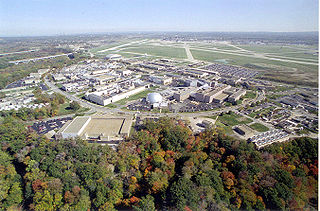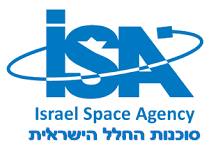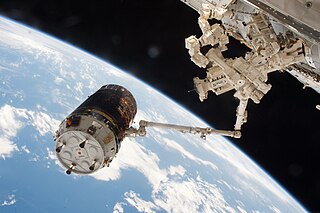
NASA John H. Glenn Research Center at Lewis Field is a NASA center within the cities of Brook Park and Cleveland between Cleveland Hopkins International Airport and the Rocky River Reservation of Cleveland Metroparks, with a subsidiary facility in Sandusky, Ohio. Its acting director is James A. Kenyon. Glenn Research Center is one of ten major NASA facilities, whose primary mission is to develop science and technology for use in aeronautics and space. As of May 2012, it employed about 1,650 civil servants and 1,850 support contractors on or near its site.

STS-65 was a Space Shuttle program mission of Columbia launched from Kennedy Space Center, Florida, 8 July 1994. The flight carried a crew of 7 and was commanded by Robert D. Cabana who would go on later to lead the Kennedy Space Center. STS-65 was an international science mission that carried the International Microgravity Laboratory (IML-2) on an 15-day mission. Columbia returned to the Kennedy Space Center on 23 July 1994.

STS-83 was a NASA Space Shuttle mission flown by Columbia. It was a science research mission that achieved orbit successfully, but the planned duration was a failure due to a technical problem with a fuel cell that resulted in the abort of the 15 day duration. Columbia returned to Earth just shy of four days. The mission was re-flown as STS-94 with the same crew later that year.

STS-94 was a mission of the United States Space Shuttle Columbia, launched on 1 July 1997.

STS-105 was a mission of the Space Shuttle Discovery to the International Space Station, launched from Kennedy Space Center, Florida, 10 August 2001. This mission was Discovery's final mission until STS-114, because Discovery was grounded for a refit, and then all Shuttles were grounded in the wake of the Columbia disaster. The refit included an update of the flight deck to the glass cockpit layout, which was already installed on Atlantis and Columbia.

The Israel Space Agency is a governmental body, a part of Israel's Ministry of Science and Technology, that coordinates all Israeli space research programs with scientific and commercial goals.

Arthur G. Stephenson was the ninth Director of the NASA Marshall Space Flight Center located in Huntsville, Alabama. He served as director from September 11, 1998, to May 2003.

Kounotori 2, also known as HTV-2, was launched in January 2011 and was the second flight of the Japanese H-II Transfer Vehicle to resupply the International Space Station (ISS). It was launched by the H-IIB Launch Vehicle No. 2 manufactured by Mitsubishi Heavy Industries (MHI) and JAXA. After the supplies were unloaded, Kounotori 2 was loaded with waste material from ISS, including used experiment equipment and used clothes. Kounotori 2 was then unberthed and separated from the ISS and burned up upon reentering the atmosphere on 30 March 2011.

The International Space Station is a platform for scientific research that requires one or more of the unusual conditions present in low Earth orbit. The primary fields of research include human research, space medicine, life sciences, physical sciences, astronomy and meteorology. The 2005 NASA Authorization Act designated the American segment of the International Space Station as a national laboratory with the goal of increasing the use of the ISS by other federal agencies and the private sector.

The Microgravity Science Glovebox (MSG) is a glovebox aboard the International Space Station (ISS). It provides a safe contained environment for research with liquids, combustion and hazardous materials in the microgravity conditions of the ISS. Without the MSG, many types of hands-on investigations would be impossible or severely limited on board the Station. The Microgravity Science Glovebox (MSG) occupies a floor-to-ceiling rack inside the Destiny module of the ISS. It is more than twice as large as gloveboxes flown on the Space Shuttle and could contain larger investigations that are about twice the size of an airline carry-on bag. A follow-on sister facility, managed by the same group at Marshall Space Flight Center, is intended to further support biological experiments with the Life Sciences Glovebox.

The Combustion Integrated Rack (CIR) is an experiment facility installed in the International Space Station (ISS). It includes an optics bench, combustion chamber, fuel and oxidizer control, and five different cameras for performing combustion experiments in microgravity.

Nanoracks LLC is a private in-space services company which builds space hardware and in-space repurposing tools. The company also facilitates experiments and launches of CubeSats to Low Earth Orbit.

Orbital-3, also known as Orb-3, was an attempted flight of Cygnus, an automated cargo spacecraft developed by United States-based company Orbital Sciences, on 28 October 2014. The mission was intended to launch at 22:22:38 UTC that evening. This flight, which would have been its fourth to the International Space Station and the fifth of an Antares launch vehicle, resulted in the Antares rocket exploding seconds after liftoff.

SpaceX CRS-6, also known as SpX-6, was a Commercial Resupply Service mission to the International Space Station, contracted to NASA. It was the eighth flight for SpaceX's uncrewed Dragon cargo spacecraft and the sixth SpaceX operational mission contracted to NASA under a Commercial Resupply Services contract. It was docked to the International Space Station from 17 April to 21 May 2015.
Anita Sengupta is an American aerospace engineer. She is a graduate in aerospace and mechanical engineering of the Viterbi School of Engineering at the University of Southern California. She was the lead systems engineer of the team that developed the parachute system that was deployed during the landing of Mars Science Laboratory Curiosity. She was subsequently the project manager of the Cold Atom Laboratory at the Jet Propulsion Laboratory at Caltech. She was then the Senior Vice President of Systems Engineering at Virgin Hyperloop One. She is currently Chief Product Officer at Airspace Experience Technologies (ASX).

Kounotori 6 (こうのとり6号機), also known as HTV-6, was the sixth flight of the H-II Transfer Vehicle, an uncrewed cargo spacecraft launched to resupply the International Space Station. It was launched at 13:26:47 UTC on 9 December 2016 aboard H-IIB launch vehicle from Tanegashima Space Center.
DreamUp PBC is a Public-benefit corporation that offers space-based educational activities. DreamUp is a spin-off and sister company of Nanoracks LLC, a private spaceflight company. Nanoracks gives DreamUp access to research opportunities on the U.S. National Lab on board the International Space Station.
Independence-X Aerospace or better known as IDXA is a NewSpace Transportation Systems company based in Seremban, Malaysia. It provides Microgravity Experiment Re-entry Capsule Service, Launch Services, Low-Cost Satellite Development and Launch, Ground Station Service, and aims for Interplanetary Missions.

SpaceX CRS-25, also known as SpX-25, was a Commercial Resupply Service mission (CRS) to the International Space Station (ISS) that was launched on 15 July 2022. The mission was contracted by NASA and was flown by SpaceX using their reusable spacecraft, the Cargo Dragon. The vehicle delivered supplies to the crew aboard the ISS along with multiple pieces of equipment that will be used to conduct multiple research investigations aboard the ISS.















